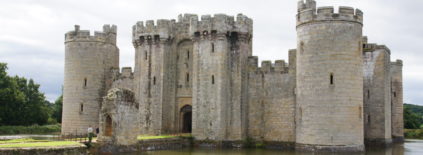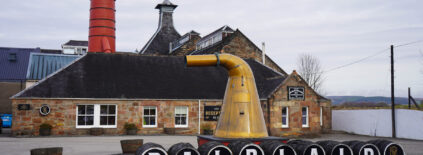
Visiting Apsley House & Wellington Arch are rarely high on the list of tourists in London, but they carry significant historical weight that they’re well worth the stop. Both are English Heritage properties and contain significant history pertaining to the Napoleonic Wars, especially around the Battle of Waterloo.
Living in London for over 10 years, I can’t count the number of times that I’ve sat on a bus, usually Rt 148, going around the Roundabout at Wellington Arch thinking to myself “I really should visit Apsley House”. I grew tired of thinking that so I made the decision to take a visit to both sites over a weekend I had in London!
The two sites, Aplsey House and Wellington Arch, are both tied very closely to history – specifically the Duke of Wellington and the Battle of Waterloo. Each site reflects very heavily upon these events.
Wellington was a second son of an aristocrat and in those days the second son was often ear marked to join the military. He worked his way up the ranks and was a General by the time Napoleon began his campaign on the Continent. Wellington notably defeated Napoleon’s armies at the Battle of Waterloo and it was considered one of the greatest wins of the Napoleonic period. For his efforts he was given the title of Duke of Wellington, and he remained a General within the armies through until his 80s.
Apsley House
Apsley House was the home to the Duke of Wellington and now serves as a beautiful museum that encompasses the era of the Napoleonic wars and Wellington’s success.
Photos were not allowed inside the house but I captured a few of the exterior. There are incredibly exhibits inside the house, however, especially some around Napoleon and Wellington’s participation in the Napoleonic war.
My favorite was a statue of Napoleon. The story behind is that he hired the Italian sculpture master Canova to depict him as “Napoleon as Mars the Peacemaker”. It was later turned away as Napoleon found the sculpture to be “too athletic”. After the wars the statue was acquired by the British Government and presented to the Duke of Wellington as a gift. This statue was worth visiting Apsley House alone for the history and unusual depiction of the famous Emperor.
Apsley House contained a tremendous amount of history pertaining to Wellington, Napoleon, and Waterloo. But the beautiful art collection within, collected by Wellington, is well worth visiting on its own.
Wellington Arch
Wellington Arch is a much smaller museum compared to Apsley House but also provides a delightful view of the neighboring area; this includes the Palace Gardens, Hyde Park, and Green Park. The inside museum focuses on the Battle of Waterloo and has some truly interesting information around the allied armies (Prussia and England) against the French army.
The Arch was originally built as the Green Park Arch in the 1820s, commemorates the Duke of Wellington’s victory at Waterloo. It serves as a significant historical landmark, symbolizing Britain’s military history and its role in shaping Europe during the Napoleonic Wars.















